
Lower Mustang
Lower Mustang
(without ever reaching the summit)
(without ever reaching the summit)
December 2023
I have spent, and still do, too many hours of my life shut inside the house, and the boundless spaces have always attracted me more than the highest peaks. I decided to visit Lower Mustang because I thought I could find a unique landscape that until then I had not even dreamed of, surrounded by the highest mountains in the world.
We walked on foot from Marpha to the famous Muktinath, always walking along the roadside with few cars and buses passing us during the day. This is because you can also get to the top by car, yet walking in a boundless valley is what attracted me. I was looking for the dignity of those sacred places, which are now being profaned by a road that seems not to believe in itself too much, with cars and tourists coming, if they do, only for a few months of the year due to the climate. Asphalt is not enough to make a place accessible.
I didn't want to photograph the grandeur of the mountains, but on the contrary, the majesty of what lies beneath. Including the people, perhaps too few for a project like this, or perhaps this scarcity helps to conceive how much space there is, without even quantifying it. Human beings have certainly modified the landscape and they do it with excavators like never before, yet, seen in proportion in these places, they remain only humble ants, aware of the sacredness of what surrounds them.
Notes:
I visited Lower Mustang 4 months after a diverted river almost swept away one of the most important villages on the route. Nevertheless, the village is resurfacing and its beauty, especially that of its monastery, does not seem to be marred.
The title, inspired by Paolo Coletti's book, read only afterwards, does not want to compare my journey to his, in terms of difficulty or intent. Yet I cannot think of a more suitable title for my vision; the "without ever" conveys well the idea of vastness, both human and landscape, of Lower Mustang.
In addition to the presumption of photographing the dignity of this valley, the thing that immediately struck me were the textures that this landscape created. Unique, sometimes harsh and sometimes soft. Textures that I tried to represent and capture in the shots.
Enjoy the view.
I have spent, and still do, too many hours of my life shut inside the house, and the boundless spaces have always attracted me more than the highest peaks. I decided to visit Lower Mustang because I thought I could find a unique landscape that until then I had not even dreamed of, surrounded by the highest mountains in the world.
We walked on foot from Marpha to the famous Muktinath, always walking along the roadside with few cars and buses passing us during the day. This is because you can also get to the top by car, yet walking in a boundless valley is what attracted me. I was looking for the dignity of those sacred places, which are now being profaned by a road that seems not to believe in itself too much, with cars and tourists coming, if they do, only for a few months of the year due to the climate. Asphalt is not enough to make a place accessible.
I didn't want to photograph the grandeur of the mountains, but on the contrary, the majesty of what lies beneath. Including the people, perhaps too few for a project like this, or perhaps this scarcity helps to conceive how much space there is, without even quantifying it. Human beings have certainly modified the landscape and they do it with excavators like never before, yet, seen in proportion in these places, they remain only humble ants, aware of the sacredness of what surrounds them.
Notes:
I visited Lower Mustang 4 months after a diverted river almost swept away one of the most important villages on the route. Nevertheless, the village is resurfacing and its beauty, especially that of its monastery, does not seem to be marred.
The title, inspired by Paolo Coletti's book, read only afterwards, does not want to compare my journey to his, in terms of difficulty or intent. Yet I cannot think of a more suitable title for my vision; the "without ever" conveys well the idea of vastness, both human and landscape, of Lower Mustang.
In addition to the presumption of photographing the dignity of this valley, the thing that immediately struck me were the textures that this landscape created. Unique, sometimes harsh and sometimes soft. Textures that I tried to represent and capture in the shots.
Enjoy the view.
I have spent, and still do, too many hours of my life shut inside the house, and the boundless spaces have always attracted me more than the highest peaks. I decided to visit Lower Mustang because I thought I could find a unique landscape that until then I had not even dreamed of, surrounded by the highest mountains in the world.
We walked on foot from Marpha to the famous Muktinath, always walking along the roadside with few cars and buses passing us during the day. This is because you can also get to the top by car, yet walking in a boundless valley is what attracted me. I was looking for the dignity of those sacred places, which are now being profaned by a road that seems not to believe in itself too much, with cars and tourists coming, if they do, only for a few months of the year due to the climate. Asphalt is not enough to make a place accessible.
I didn't want to photograph the grandeur of the mountains, but on the contrary, the majesty of what lies beneath. Including the people, perhaps too few for a project like this, or perhaps this scarcity helps to conceive how much space there is, without even quantifying it. Human beings have certainly modified the landscape and they do it with excavators like never before, yet, seen in proportion in these places, they remain only humble ants, aware of the sacredness of what surrounds them.
Notes:
I visited Lower Mustang 4 months after a diverted river almost swept away one of the most important villages on the route. Nevertheless, the village is resurfacing and its beauty, especially that of its monastery, does not seem to be marred.
The title, inspired by Paolo Coletti's book, read only afterwards, does not want to compare my journey to his, in terms of difficulty or intent. Yet I cannot think of a more suitable title for my vision; the "without ever" conveys well the idea of vastness, both human and landscape, of Lower Mustang.
In addition to the presumption of photographing the dignity of this valley, the thing that immediately struck me were the textures that this landscape created. Unique, sometimes harsh and sometimes soft. Textures that I tried to represent and capture in the shots.
Enjoy the view.
I have spent, and still do, too many hours of my life shut inside the house, and the boundless spaces have always attracted me more than the highest peaks. I decided to visit Lower Mustang because I thought I could find a unique landscape that until then I had not even dreamed of, surrounded by the highest mountains in the world.
We walked on foot from Marpha to the famous Muktinath, always walking along the roadside with few cars and buses passing us during the day. This is because you can also get to the top by car, yet walking in a boundless valley is what attracted me. I was looking for the dignity of those sacred places, which are now being profaned by a road that seems not to believe in itself too much, with cars and tourists coming, if they do, only for a few months of the year due to the climate. Asphalt is not enough to make a place accessible.
I didn't want to photograph the grandeur of the mountains, but on the contrary, the majesty of what lies beneath. Including the people, perhaps too few for a project like this, or perhaps this scarcity helps to conceive how much space there is, without even quantifying it. Human beings have certainly modified the landscape and they do it with excavators like never before, yet, seen in proportion in these places, they remain only humble ants, aware of the sacredness of what surrounds them.
Notes:
I visited Lower Mustang 4 months after a diverted river almost swept away one of the most important villages on the route. Nevertheless, the village is resurfacing and its beauty, especially that of its monastery, does not seem to be marred.
The title, inspired by Paolo Coletti's book, read only afterwards, does not want to compare my journey to his, in terms of difficulty or intent. Yet I cannot think of a more suitable title for my vision; the "without ever" conveys well the idea of vastness, both human and landscape, of Lower Mustang.
In addition to the presumption of photographing the dignity of this valley, the thing that immediately struck me were the textures that this landscape created. Unique, sometimes harsh and sometimes soft. Textures that I tried to represent and capture in the shots.
Enjoy the view.


Day 1: Marpha
Marpha is, deservedly, famous for its production. An exquisite village, like its apples, with stone houses and thick walls and alleys crossed by mules and a few motorcycles used mainly for internal transport.
What is striking is that even a village that produces apples, with all its trees, is little more than an anthill in the face of the grandeur of this valley and the mountains on the horizon.
Thanks to Hotel Sunrise for recharging our energy and protecting us from the cold.
Marpha is, deservedly, famous for its production. An exquisite village, like its apples, with stone houses and thick walls and alleys crossed by mules and a few motorcycles used mainly for internal transport.
What is striking is that even a village that produces apples, with all its trees, is little more than an anthill in the face of the grandeur of this valley and the mountains on the horizon.
Thanks to Hotel Sunrise for recharging our energy and protecting us from the cold.


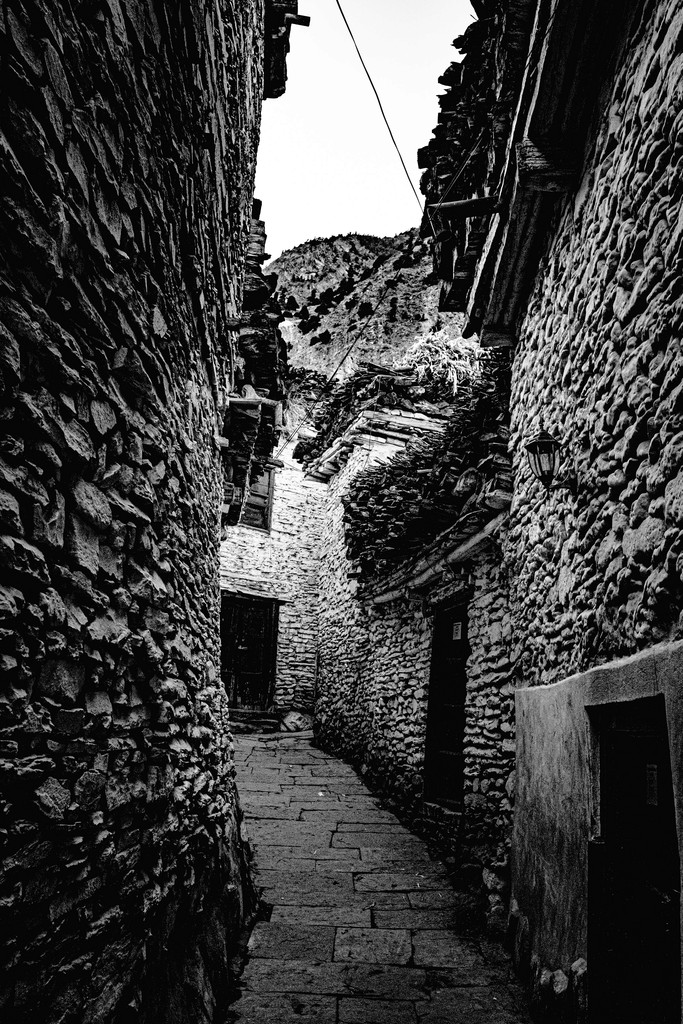













Day 2: Jomnson and Dhumba Taal
Day 2:
Jomnson & Dhumba Taal
The city is famous for having an airport, and the real beauty is the lake located an hour's walk away, with a suspended bridge to cross in the middle. Dhumba (Taal) Lake is spectacular, with the famous Nepalese flags (Lung ta), an ever-present sight.
In Jomsom, we stayed at Hotel Sunrise (relatives of the first hotel in Marpha), which pampered us, protecting us from the first snowflakes of the season.
I was immediately struck by the features of the kind owner, Awantica. I lost contact and his name, and even in the internet age, communication is not so easy, so I take this opportunity to thank him and greet him, one of the two portraits of this trip that contribute to giving dignity to this valley.
The city is famous for having an airport, and the real beauty is the lake located an hour's walk away, with a suspended bridge to cross in the middle. Dhumba (Taal) Lake is spectacular, with the famous Nepalese flags (Lung ta), an ever-present sight.
In Jomsom, we stayed at Hotel Sunrise (relatives of the first hotel in Marpha), which pampered us, protecting us from the first snowflakes of the season.
I was immediately struck by the features of the kind owner, Awantica. I lost contact and his name, and even in the internet age, communication is not so easy, so I take this opportunity to thank him and greet him, one of the two portraits of this trip that contribute to giving dignity to this valley.
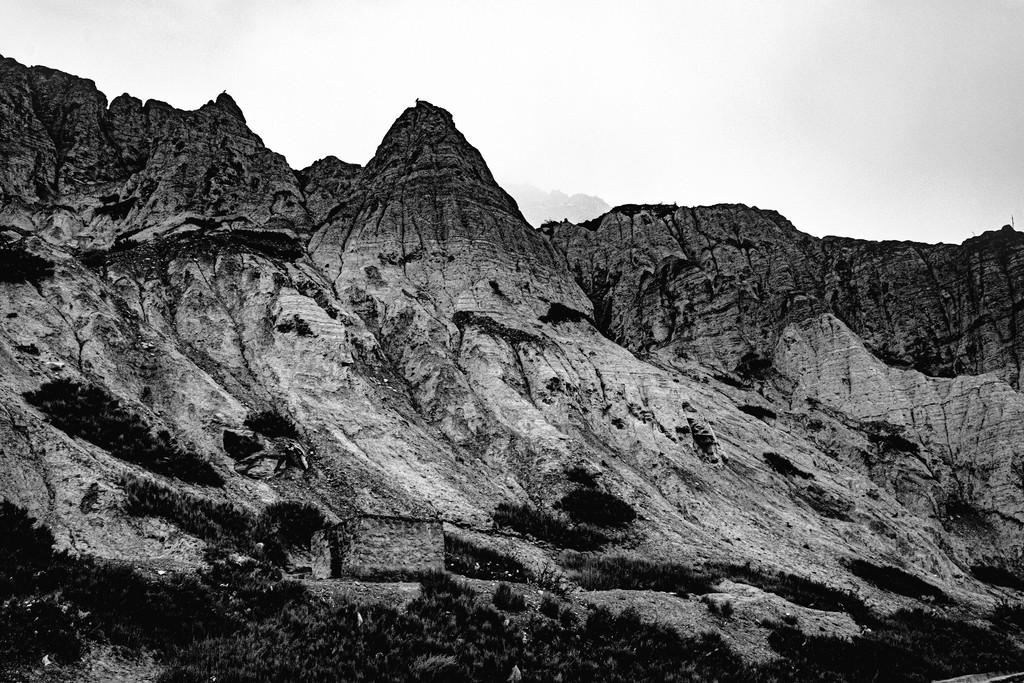



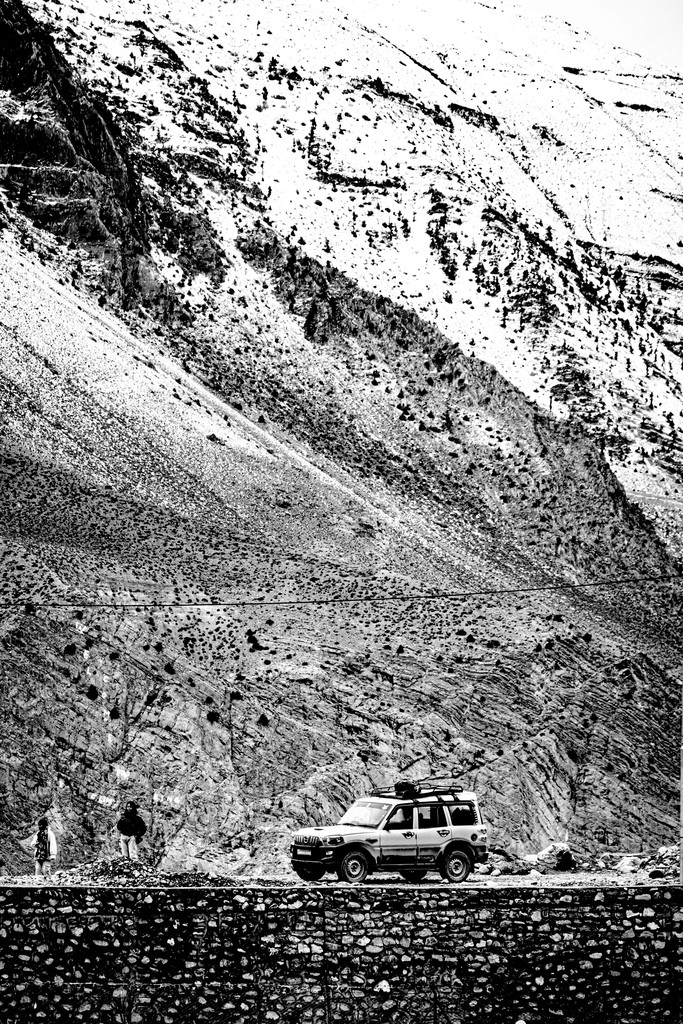









Day 3: Kagbeni
The road to Kagbeni was definitely my favorite. The valley began to give us glimpses, more and more often, of some of the highest mountains in the world above the boundless space.
The road to Kagbeni was definitely my favorite. The valley began to give us glimpses, more and more often, of some of the highest mountains in the world above the boundless space.




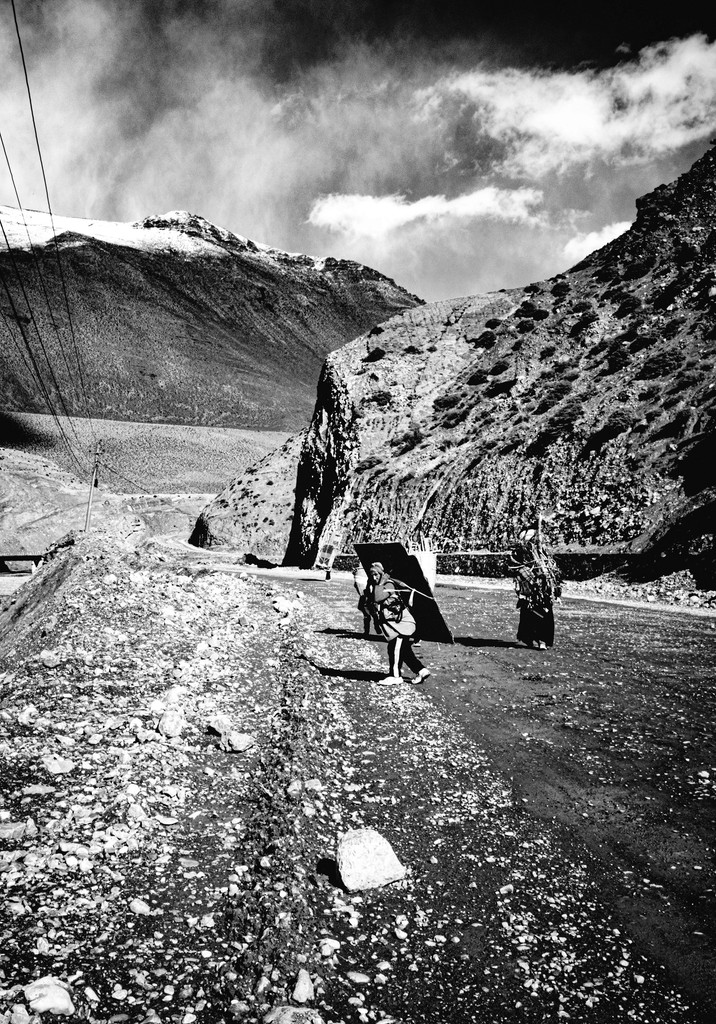





About halfway, a modern statue reminds us of one of the most famous sayings in Nepal: "Guest is God."
Shortly after, men, women, and children remind us that there are no trees here, and for heating and building, wood is always useful. My intuition is that someone had some things to break down and these people took the opportunity to make as much firewood as possible and carry it by hand to their village, on a road that only for a small stretch kissed ours, higher up and presumably not reachable by car.
About halfway, a modern statue reminds us of one of the most famous sayings in Nepal: "Guest is God."
Shortly after, men, women, and children remind us that there are no trees here, and for heating and building, wood is always useful. My intuition is that someone had some things to break down and these people took the opportunity to make as much firewood as possible and carry it by hand to their village, on a road that only for a small stretch kissed ours, higher up and presumably not reachable by car.


















Kagbeni, 3 and a half months before our arrival, was struck by a tragedy. An upstream avalanche diverted the river so much that a town that had existed for hundreds of years was submerged by mud and earth. I have seen the effect of earthquakes, I have seen that of fire, but I had never seen this, which incidentally has nothing to do with human error in design, as in the case of an earthquake, or error in the case of fire. This simply happened to them. Taking away the little that a village like this can be imagined to have: lives and accommodations.
The monastery (Kag Chode Thupten Samphel Ling Gompa), founded in 1429, positioned higher up, from what I understood, was not damaged. A jewel, as are the streets of Kagbeni. I invite you to visit the interior, one of the most fascinating things on this journey (it is not possible, fortunately, to take photos inside). Moreover, many monks have always lived and studied here, making the temple even more interesting.
Thank you to Hotel Shangri-La and Thakali Banchhaghar for being so cozy and nice.
Kagbeni, 3 and a half months before our arrival, was struck by a tragedy. An upstream avalanche diverted the river so much that a town that had existed for hundreds of years was submerged by mud and earth. I have seen the effect of earthquakes, I have seen that of fire, but I had never seen this, which incidentally has nothing to do with human error in design, as in the case of an earthquake, or error in the case of fire. This simply happened to them. Taking away the little that a village like this can be imagined to have: lives and accommodations.
The monastery (Kag Chode Thupten Samphel Ling Gompa), founded in 1429, positioned higher up, from what I understood, was not damaged. A jewel, as are the streets of Kagbeni. I invite you to visit the interior, one of the most fascinating things on this journey (it is not possible, fortunately, to take photos inside). Moreover, many monks have always lived and studied here, making the temple even more interesting.
Thank you to Hotel Shangri-La and Thakali Banchhaghar for being so cozy and nice.


Day 4: Ranipauwa & Muktinath
Day 4:
Ranipauwa & Muktinath
The walk from Kagbeni to Muktinath was the hardest, a 1000-meter gradual climb, but also the most varied and spectacular. The paved road gives motorcyclists breathtaking views. What is most striking are these huge mountains in the background, which no matter how small they are, always appear powerful but can do nothing, helpless, in front of the valley.
Muktinath is one In Hinduism, it is one of the 108 Divya Desams and the only Divya Desam located outside India, a must-see for many Hindus, but there are no photos of it in this series.
However, in the same complex, there is a huge figure of Buddha and perhaps one of the most beautiful observation points I have ever found myself in front of, surrounded on all sides by huge mountains and of course one of the end point of this endless valley.
The walk from Kagbeni to Muktinath was the hardest, a 1000-meter gradual climb, but also the most varied and spectacular. The paved road gives motorcyclists breathtaking views. What is most striking are these huge mountains in the background, which no matter how small they are, always appear powerful but can do nothing, helpless, in front of the valley.
Muktinath is one In Hinduism, it is one of the 108 Divya Desams and the only Divya Desam located outside India, a must-see for many Hindus, but there are no photos of it in this series.
However, in the same complex, there is a huge figure of Buddha and perhaps one of the most beautiful observation points I have ever found myself in front of, surrounded on all sides by huge mountains and of course one of the end point of this endless valley.
































The authentic village, Ranipauwa, positioned 100 meters below, offered me, amidst chilling temperatures, an array of strikingly beautiful visuals. I reflect on the woman who halted briefly to better attend to one of her kids or the equine that kept me pondering all night whether it would survive the morning chill. The final minor ascent, a set of stairs within the village, leads to Guru Rinpoche, yet another remarkable viewpoint.
Thank you to the Hotel Himalayan Paradise for the beautiful conversation we had. Sorry if I always left the door of the roof open because I was constantly going there to take pictures.
The authentic village, Ranipauwa, positioned 100 meters below, offered me, amidst chilling temperatures, an array of strikingly beautiful visuals. I reflect on the woman who halted briefly to better attend to one of her kids or the equine that kept me pondering all night whether it would survive the morning chill. The final minor ascent, a set of stairs within the village, leads to Guru Rinpoche, yet another remarkable viewpoint.
Thank you to the Hotel Himalayan Paradise for the beautiful conversation we had. Sorry if I always left the door of the roof open because I was constantly going there to take pictures.






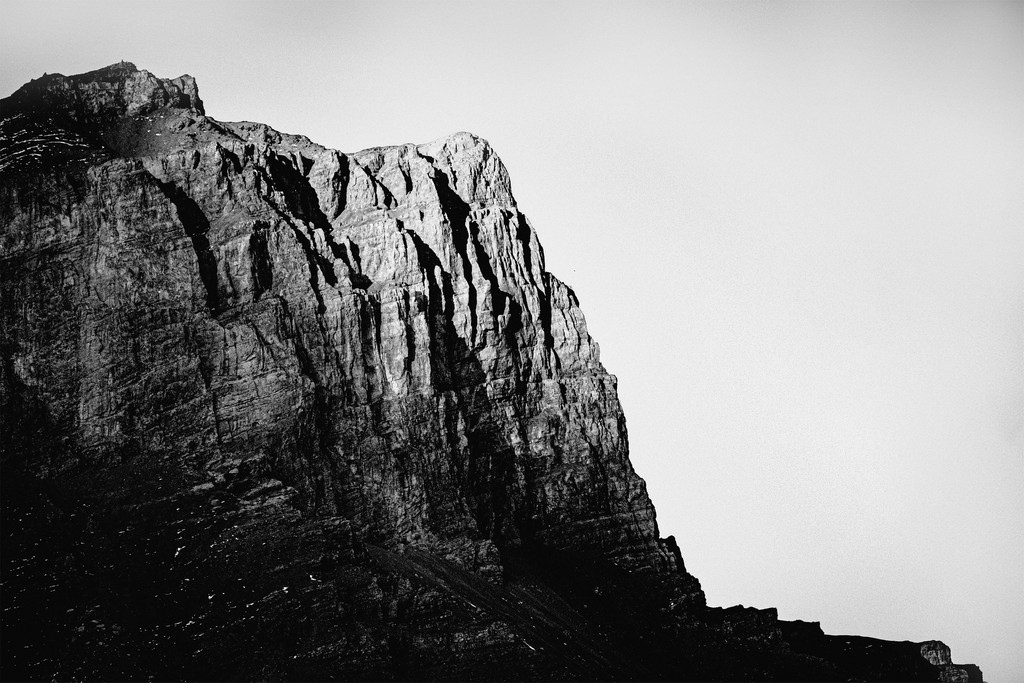



Feel free to contact me to help to identify those peaks.
Feel free to contact me to help to identify those peaks.


Day 5: Tatopani
An bus ride of an unspecified number of hours took us back down the valley the following day, to the natural hot spring complex of Tatopani (hot water). And there it was looming and breathless in the distance Nilgiri (7141m), so close in this photo but with dozens of kilometers of expanses in between.
Thank you Dhaulagiri Lodge and Restaurant for restoring us.
A bus ride of an unspecified number of hours took us back down the valley the following day, to the natural hot spring complex of Tatopani (hot water). And there it was looming and breathless in the distance Nilgiri (7141m), so close in this photo but with dozens of kilometers of expanses in between.
Thank you Dhaulagiri Lodge and Restaurant for restoring us.


Bonus: our beloved guide
I definitely want to thank our guide Swastika Dahal, the youngest certified female guide in Nepal, for a very long list of things or simply for being an excellent and friendly guide.